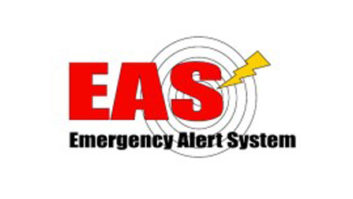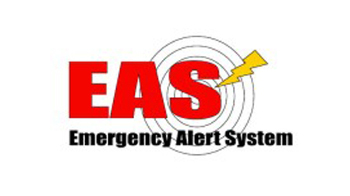The author is a core member of the Broadcast Warning Working Group.

Richard Rudman The Oct. 24 bogus Emergency Alert System Emergency Action Notice is only one of a number of issues that have confronted EAS stakeholders since we began our enhanced public warning journey in 1997.
Exactly how this bogus alert happened is still being investigated, but what occurred is only one symptom of many remaining structural and operational emergency public warning problems in the EAS, and in the entire range of what we refer to as Emergency Public Information.
We must squarely address all these problems before we can have a truly secure, effective and reliable EPI structure that includes the EAS. We should also stop to recognize the amazing contributions of EAS subject experts, vendors, other stakeholders and employees of our federal partners who still believe that the time and effort to improve EPI is worth it.
The Broadcast Warning Working Group is only one stakeholder within the community of EAS subject experts and others who have been working with the FCC, FEMA and the National Weather Service on EAS improvements.
Several of our BWWG core members participated in the FCC’s fourth Communications Security, Reliability and Interoperability Council. The FCC tasked CSRIC IV with looking at Big Picture issues having to do with state EAS Plans, EAS authentication and security and other aspects to assure that Presidential EAN work correctly. The FCC, unfortunately, did not task CSRIC IV to report on and offer suggestions on all the issues we are about to discuss.
Here is the BWWG analysis of what many of the issues are and what we must do to improve the EAS. The BWWG encourages all EAS stakeholders to agree or disagree with us via Radio World or at eas.radiolists.net.
OUR MISSION
Conflicting interpretations of what Part 11 requires contributes to the harm done to the overall EAS mission, effort and reputation.
We must also reinvigorate the EAS mission in the hearts and minds of all stakeholders who have public warning responsibilities. This most certainly includes those of us who take on the thankless volunteer effort of setting up and maintaining EAS monitoring assignments, the volunteer members of local and state EAS Committees know as the State Emergency Communications Committees, or SECC and the Local Emergency Committees.
We are very much concerned that there are no provisions yet for total FCC Part 11 conformance testing for devices installed by EAS Participants, something that the BWWG and others have brought to the attention of the FCC in formal comments.
Making the interoperability issue worse is an unknown number of downstream warning systems and equipment designed using 1990s or earlier legacy Emergency Broadcasting System and EAS attributes. Those embedded attributes may render them useless when and if the FCC makes changes to how EAS works. At this time, no one can say for sure how this will affect overall warning propagation, or how we can migrate legacy warning systems to be fully compatible with enhanced capabilities made possible by the Common Alerting Protocol. Obstacles like this may well stand in the way of many EAS improvements.
The FCC will likely issue revised rules for EAS authentication and security issues based on the CISRIC IV report on this issue and public Comments. Other changes may come about on who and how EAS is regulated. It is still too early to tell what will happen. Recent discussions on The EAS Forum have centered on a different type of authentication procedure than has been suggested heretofore.
THE VRE SYSTEM
The Virtual Red Envelope concept is an automated message validation that gets its name from the Cold War-era EBS red envelope that contained codes to validate national activations. This system was never used.
The proposed VRE system would use the IPAWS servers to distribute a short validation code as part of the Required Weekly Test. Upon receipt of an enhanced single location EAN, EAT and NPT message created only by the Presidential Entry Point system and authorized test encoders, recipient equipment would compare the validation code of the enhanced message header to the prior downloaded and locally stored code. A code match would compel the recipient equipment to automatically and immediately proceed to forward the entire enhanced EAS message in accordance with Part 11 requirements. A non-match would trigger an alarm requiring manual review of the message for verification of origination.
To maintain complete conformance with the SAME coding standard, the validation field would be appended at the end of the EAS message header. The single location code EAN, EAT and NPT message types would trigger the recipient equipment to accept the added field for decoding and validation.
To minimize erroneous mis-matches, missed code circulations and the staggered weekly test schedule based on time zones, the system would include the three most recent weeks’ validation codes. The EAS message’s enhanced header would include all three weeks’ codes in the field. If any one of the three codes match, validation would occur. Additionally, recipient equipment that determines that validation codes have lapsed could poll IPAWS for that week’s validation code.
While changes and clarifications to Part 11 can fix some EAS deficiencies, the current open FCC Proposed Rulemaking does not deal with the different ways that EAS devices interpret the current rules The FCC has never required an overall Part 11 conformance testing procedure.
Our goal now must be to work with all EAS stakeholders to fulfill the promise of enhanced public warnings to help save more lives and property.

credit:
Envelope by iStockphoto/hanibaramIPAWS: A WONDERFUL NAME
The Partnership for Public Warning Inc. was formed as a nonprofit public-private partnership corporation after Sept. 11, 2001 because the United States lacked an overall public warning policy and a means to implement it.
Through a series of reports, the PPW outlined what had to be done.
The Common Alerting Protocol now in use was a work product of the PPW that wrote several seminal emergency public warning reports during its short life.
PPW reports and other actions brought CAP into existence as an open source international non-proprietary standard to issue public warnings over any CAP-compliant warning system, not just radio, television and cable systems.
A few years ago FEMA came up with a great name for what CAP is supposed to do: Integrated Public Alert and Warning System. It did so based on PPW reports.
Still missing as of late 2014 is the overall United States Warning strategy and rules in place to make sure the interoperability features of CAP are truly interoperable. IPAWS is a wonderful name for something that so far does not exist.
Realizing the true potential and public benefits of IPAWS includes but should not be limited to the following:
• Renew and increase cooperation between the primary federal public warning partners, the FCC, FEMA, the National Weather Service and the Department of Justice (AMBER EAS) for all public warning systems — not just EAS.
• Bind state and local EAS committees to state and local emergency management agencies so public warnings can become a truly effective component of emergency response.
• Make sure that EAS participant management is fully engaged. EAS must involve more than the engineering community.
• Take action to rectify how different EAS equipment interprets FCC EAS Rules by making Part 11 requirements uniform and crystal-clear.
• Set a date certain for discontinuing use of legacy EAS equipment as well as EAS equipment that is outmoded and no longer supported by the manufacturer.
• Consider what is being called virtual red envelope authentication for the EAS
• Reconstitute the PPW
• Implement bipartisan Congressional oversight to make sure when IPAWS starts to do what its name promises, it will continue to do so.
• Dollars! We will know that various levels of government take their moral and legal duty to warn seriously if they support the effort with serious funding. Getting warnings to a public at risk should no longer be an unfunded mandate.
We might all start by agreeing to a common goal statement that summarizes what was the driving force to form the PPW: Emergency public warnings must get verified, action-oriented information to the maximum possible number of people at risk so they can take timely protective actions to preserve their lives and property.
EVOLUTION OF EPI
This step will bring into being a class of devices we call warning appliances (#warningappliances) that can get information-rich CAP-based messages to the public without interrupting any on-air program stream unless truly necessary.
Such devices will poll CAP servers as well as legacy EAS sources and display as much or as little information on displays ranging from tiny LCD screens, scrolling video messages on to devices that can work with home video and audio entertainment systems.
This is not a new idea. It was proposed years ago as a natural evolutionary product of CAP. In our opinion, the consumer electronics industry has to step up and create reliable, attractive and easy-to-use consumer warning appliances. The FCC, FEMA, NWS and the U.S. Department of Justice (AMBER) have to all get behind this and push — hard!
Congress can help by finally coming up with that unified National warning strategy should incorporate requirements for “warning appliance” features in broadcast and other program stream devices, and stand-alone products.
Comment on this or any story. Email [email protected].
Richard Rudman was one of 17 founding trustees of the Partnership for Public Warning; he contributed to PPW reports about public warnings and the EAS and to developments that led to the Common Alerting Protocol. He is a past national president of the Society of Broadcast Engineers; he is an SBE Fellow and a recipient of its lifetime achievement award. He is vice chair of the California EAS State Emergency Communications Committee.












